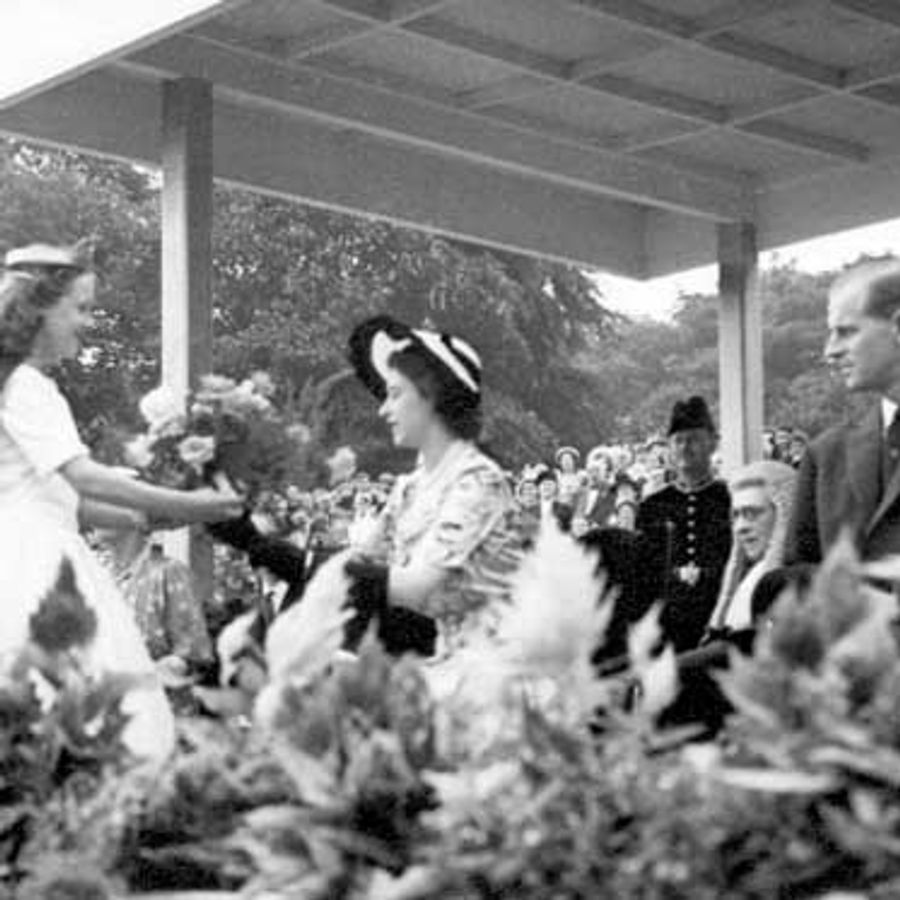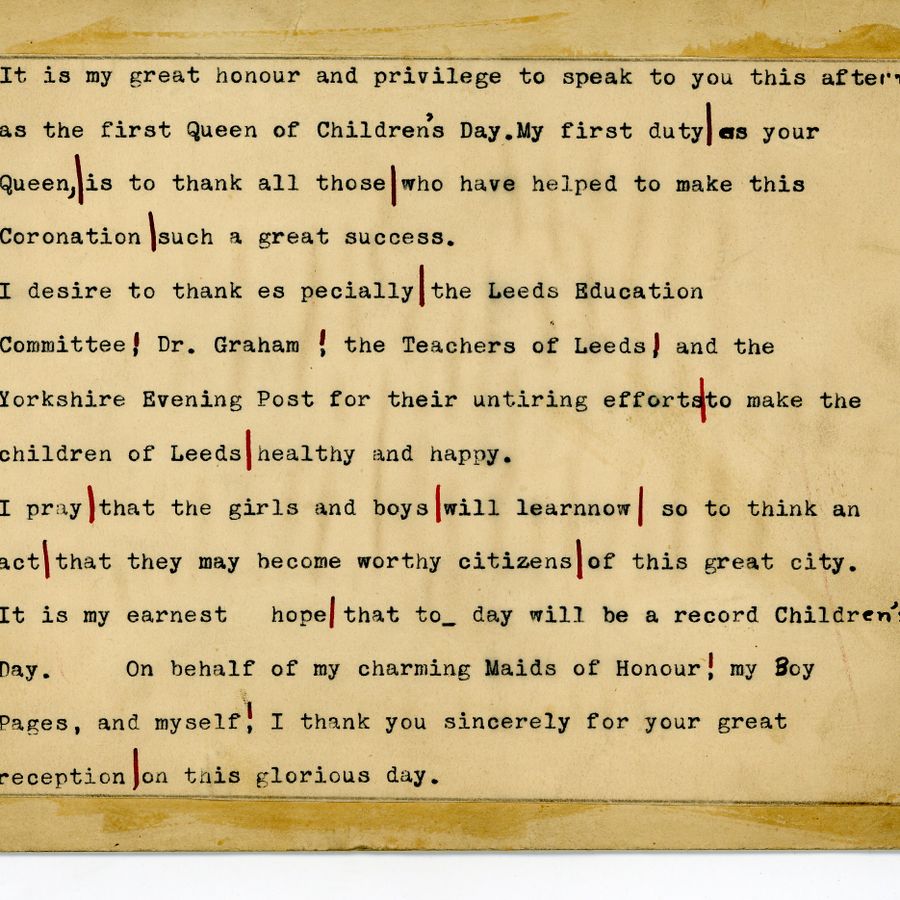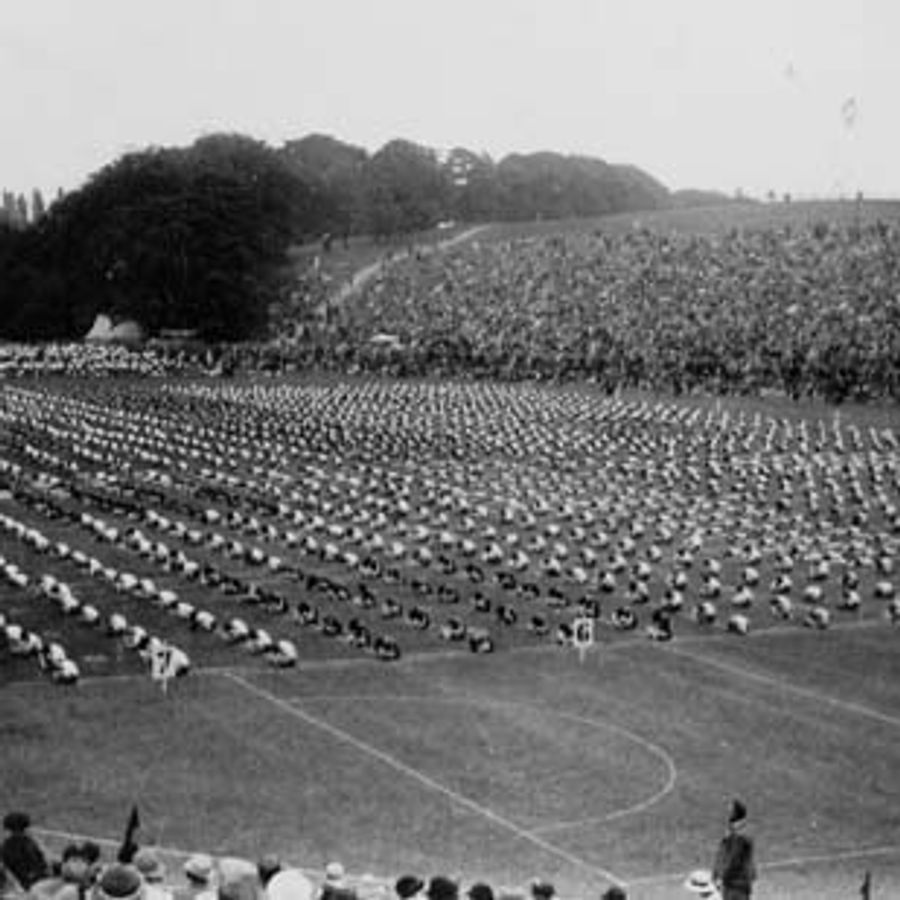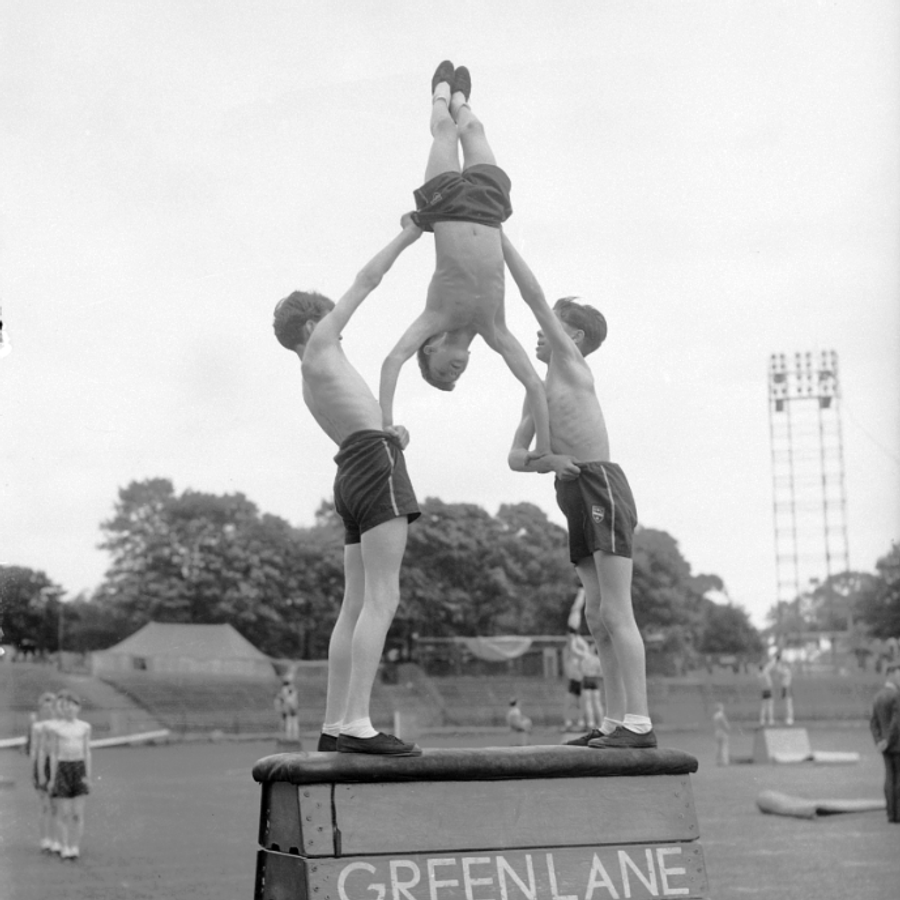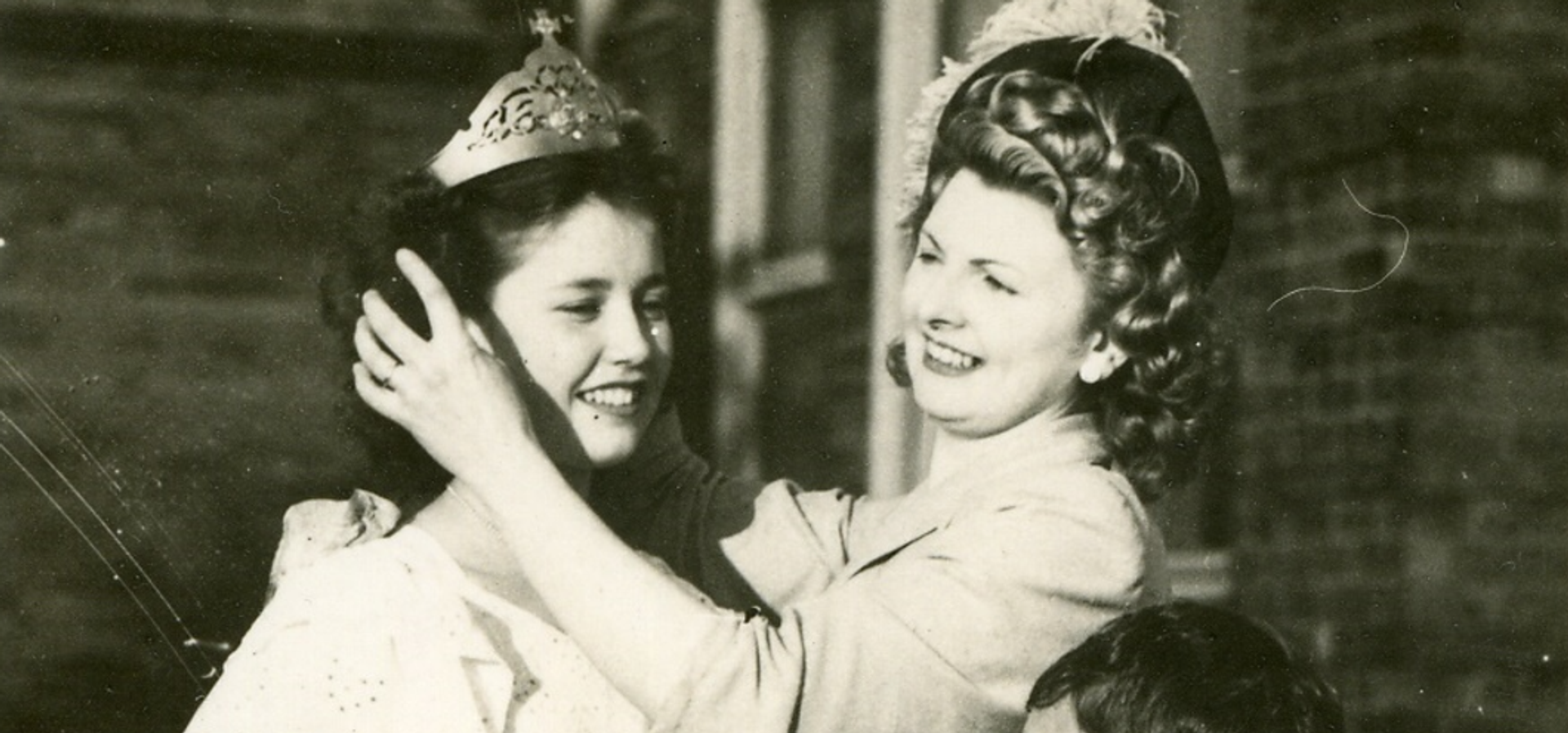
Children’s Day in Leeds: The Iconic Celebration That United Generations
For 40 years pupils from almost every school in Leeds came together in Roundhay Park to compete in Children’s Day. The action-packed day was entirely organised by dedicated teachers, including qualifying events and commemorative books. Though it ended 60 years ago the atmosphere, competitions and achievements have left a lasting impact on generations of loiners. So what was it?
The sports day to end all sports days
Children’s Day began in 1922 and ended in 1963 with a six year pause for the Second World War. The day began with the crowning and procession of the Children’s Day queen and her attendants. They travelled in cars from the Town Hall to Roundhay Park accompanied by themed and decorated floats. In 1949 Queen Elizabeth herself attended, gave a speech and was presented with flowers by that year’s Children’s Day queen.
Following the parade and crowning pupils took part in a variety of events, including sports days staples like the egg and spoon and sack races. To qualify to take part in in Children's Day students first had to compete in regional qualifiers earlier in the year.
Pupils also won prizes for having healthy teeth and good handwriting, with winners of the dental competitions getting a cash prize of 2 shillings (almost £4 today). One Hunslet resident, Roy, recalled winning a dental competition. Unfortunately, an accident with the family dog meant this win couldn't be repeated.
Victorious pupils went to the town hall to receive certificates and blazer badges which were replaced by medals in later years. Keith, a former Hunslet Rugby League Football Club player, remembers his mum buying a blazer especially for the badges he won in the sprints. Keith attended from 1951-1956 and still has all his badges, including a special commemorative badge from 1952, the year of Queen Elizabeth II‘s coronation.
Families admired the performances sat on Hill Sixty, named to commemorate soldiers who fought on Hill Sixty in the Battle of Ypres in the First World War. The busiest years (often those with the best weather) saw up to 100,000 people attending. For many locals it was the main day out of the year, with trams packed full of excited families heading to Roundhay Park.
Sprint to success
Keith credits competing in Children’s Day with giving him the discipline to succeed in his professional rugby career. For him Children’s Day gave opportunities to achieve success outside of academic subjects, which gave him and others the confidence to succeed later in life. Another local, Bob, also went on to play rugby professionally with Hunslet after competing at Children’s Day in the early 1950s and his maypole dancing partner Joan became a professional dancer.
A fond farewell
Children’s Day came to an end as the increase of a new type of school, secondary moderns, meant smaller local schools were closed and teachers taught bigger classes at larger schools. This made it harder for teachers to devote the amount of time and energy needed to organise a day as enormous and spectacular as Children’s Day.
Gone doesn’t mean forgotten, however. As part of the 2023 Year of Culture Leeds 2023 honoured the lasting legacy of Children’s Day with a series of photography portraits of children around the city taken in locations of their choosing as well as an event in Roundhay Park. Children’s Day reimagined: portraits of the kids of Leeds – in pictures | UK news | The Guardian
With thanks to members of The Hunslet Breakfast Club for sharing their memories of Children’s Day.

